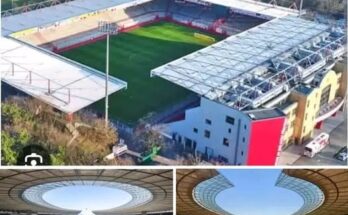It’s official: Sade Adu, the timeless voice and icon of soul, is returning to the global stage with a 2026 world tour, sending waves of excitement through her fans across continents. The tour is being billed as “Echoes in the Dark”, connecting her deep catalog of classics with the promise of new material, and giving long‑waiting audiences their chance to experience her live again. The announcement marks a dramatic and emotional comeback for an artist who does not take the stage often, and fans are already pouring over the dates, cities, and what each concert might feel like.
The tour will begin in Lagos, Nigeria, embracing her roots and paying tribute to the country linked to her origin. Lagos, with its vibrant musical culture and deep emotional meaning, serves as a symbolic and celebratory launching point. The announcement states that opening night in Lagos will be a spectacle: carefully designed stage visuals, lighting, and atmosphere that help create an immersive space, allowing every fan to feel intimately connected to her performance. (ISport) From Lagos, the tour spreads outward across Africa, Europe, North and South America, and Asia, promising to bring Sade’s voice to both longtime devotees and new audiences.
In Africa beyond Lagos, she is scheduled to appear in Johannesburg, Accra, and Nairobi. These stops across the continent carry emotional weight: for many African fans this will be among their first opportunities to see her live on the continent of her ancestry. The choice to include African cities is more than logistical—it shapes a narrative of homecoming. (ISport)
Once Africa’s leg unfolds, she will carry the tour into Europe, hitting capitals such as London, Paris, Berlin, Madrid, Milan, and others. The European leg is expected to traverse the major hubs of culture and music, each stop drawing audiences who have long admired her voice from afar. (ISport) In particular, London is often emphasized—the city has a strong connection to her career trajectory, and a performance there symbolizes her status as a global British‑Nigerian artist. The tour will also reflect her global reach: after Europe, she moves into North America, where stops include cities like New York, Los Angeles, Chicago, Toronto, Miami, among others. (ISport) In the U.S., many fans can expect her classic hits like “Smooth Operator,” “By Your Side,” and “No Ordinary Love” to resurface, suffused with deep emotion and stagecraft that feels at once grand and intimate. (ISport)
The South American leg will include Brazil, Argentina, and Chile—countries where Latin audiences have long had a reverence for soulful and emotional music. This part of the tour is especially notable because Sade has rarely visited or toured South America in her live career, so these concerts may feel historic to many of her fans there. (ISport) After that, she heads to Asia with cities such as Tokyo, Seoul, Hong Kong, Singapore slated to receive performances. Asian fans, often appreciative from afar, will get an overdue chance to be part of her live presence. (ISport)
Though an exact global itinerary with every city is not yet fully disclosed, the trajectory is clear: the tour unites her legacy and her future, bringing her art across continents to reconnect with listeners everywhere. The announcement also ties to a new album project. The tour is meant not merely as a retrospective celebration but as a vehicle to introduce new songs from Echoes in the Dark. Reports suggest the new material will explore themes of memory, introspection, love, longing, and emotional nuance—territory Sade has always navigated with poetic subtlety. (ISport)
In terms of style and performance, Sade’s concerts have never depended on over-the-top spectacle or gimmicks. Rather, her strength lies in her vocal presence, the emotional resonance of her phrasing, and the minimalist yet powerful arrangements that frame her voice with space and depth. That aesthetic is expected to continue in this tour: performances built around atmosphere, close connection, poetic lighting, and musical intimacy even in large arenas. (ISport) The set list is anticipated to be a thoughtful blend: the staple hits fans expect, along with glimpses of the new material, arranged in a way that makes old and new feel like parts of the same emotional journey. (ISport)
Ticket logistics are already generating buzz. While the specific schedule for all markets has yet to be made public, early on the announcement suggests that pre‑sale access will likely open for fan club members or mailing list subscribers in November 2025, with general on‑sale starting soon after. (TourSetlist.com) Pricing is expected to range across tiers, with standard tickets at more accessible levels and VIP packages offering premium experiences—early access, premium seating, special merchandise, and possibly meet‑and‑greet or lounge access. (TourSetlist.com)
What makes this tour especially compelling is the narrative of return, legacy, and renewal. For decades, Sade has existed in a certain mystique—rarely touring, occasionally releasing music, always commanding admiration with restraint. Her decision to mount a world tour now suggests a renewed commitment to sharing her voice live, linking generations of fans, and embedding her new art in the context of her storied catalog. For younger listeners who may have discovered her through streaming, social media, or sampling by contemporary artists, this tour offers a rare chance to see a living legend perform with full emotional resonance. And for longtime devotees, it is possibly a pilgrimage, a reconnection, a moment to witness an artist at full presence.
To attend a Sade concert in 2026 will likely be to enter a space of calm intensity. The audience may sit in dimmed light, waiting for her to step forward, voice piercing the quiet, the band supporting with spare elegance. The spectacle will not be in fireworks or bombastic choreography, but in the slow unfolding of each song, the silences between phrases, the emotional pauses, the weight of unspoken longing carried in her voice. Many have described her music as a kind of sonic poetry—every note chosen, every space meaningful—and in this tour, fans expect that same reverence placed on each moment.
In Lagos, the opening night is expected to set the tone. There will likely be a sense of communal celebration, a homecoming energy, perhaps local artists or cultural elements woven into parts of the show. That night could feel like the heartbeat of the tour, anchoring the global journey with roots. From there, each city will have its own flavor: in Paris, the romance of night and art; in London, the convergence of culture and legacy; in Tokyo, the meeting of discipline and devotion; in New York, the energy of a city that hears voices from across the world; in São Paulo, the embrace of an audience steeped in musical passion. Traveling the world with her, each concert becomes a conversation between Sade and her audience, crossing cultures, languages, and distances.
There is speculation among fans and media that, beyond the music, the tour might include elements of storytelling—visuals, video interludes, personal reflections, or a narrative thread tying the performances to the themes of Echoes in the Dark. Some believe she may share archival footage, voiceovers, or images reflecting her life and creative path, weaving the new songs into a broader arc of her artistic journey. Whether that will happen remains unconfirmed, but the possibility underscores the sense that this tour aims to be more than a series of shows—it is intended as a statement, an artistic arc, a dialog between past and present.
The scale of the tour is ambitious. To move equipment, crew, staging across continents demands precise logistics—and yet given Sade’s history of taking time between tours, careful planning and pacing are expected. The spacing of concert legs will likely leave room for rest, travel, and creative recalibration. It also gives momentum: as the tour proceeds, momentum builds, excitement intensifies, and each performance may feed into awareness and demand in the next region.
Critically, the tour is also a test of relevance and endurance. In an era when many artists saturate the market with constant touring or frequent releases, Sade’s return via a deliberate, curated world tour will underline that her art exists outside immediate trends. Her return demonstrates that an artist can command attention not by constant visibility, but through lasting emotional resonance and integrity. If the tour succeeds—commercially, critically, emotionally—it will reaffirm her rare space in music: a voice that does not require hype, yet commands deep loyalty and cross-generational love.
For fans in Nigeria and West Africa—like where you are—this is a moment of pride and urgency. To have the first show in Lagos potentially means that many fans will get a chance to see her close to home rather than traveling overseas. It raises the question of local demand, ticket supply, and access: presale registration, early booking, travel plans, lodging—all will become part of the journey for dedicated fans. Many will watch the official channels, wait for announcements, and prepare to move fast.
One can imagine the emotional scenes: longtime listeners seeing her voice live for the first time; younger fans experiencing the hush before she sings; moments when the audience collectively holds its breath between lines; people swaying, eyes closed, lost in the sound; tears, cheers, silence, applause. In each city, the tour becomes a moment in time, a memory woven into the lives of those present.
Yet there remain open questions. The full list of cities has not been finalized publicly. The exact dates of many stops are pending announcement. Whether the new album Echoes in the Dark will drop before or during the tour, and how fully new songs will feature, remains to be seen. Some fans question whether the tour might shift due to health, logistics, or adaptation to demand. The balance between set list rigidity and spontaneous magic in each show also will be interesting to observe.
Still, what is clear is this: the 2026 Sade Adu world tour is more than a comeback. It is an artistic statement, a global embrace, and a reconnection across time. For every city she touches, the tour offers a chance to step into the subtle power of her voice, to feel the hush, the longing, the space, the echoes. It promises to renew the magic of live music at a time when many have come to experience her largely through recordings. To hear Sade live again is to be reminded of what live voice, human connection, and musical nuance can do in a concert hall.
In the months ahead, fans will keep watching official announcements, registering for presales, tracking city reveals, and dreaming about which night they will see her. When the tour unfolds, it may come to feel like a pilgrimage—not just a concert series, but a journey across places, hearts, and memory. Every city becomes a stop not only in geography but in the emotional map she traces—connecting audiences old and new, reminding us why Sade’s voice matters, and creating new echoes in the dark for years to come.



